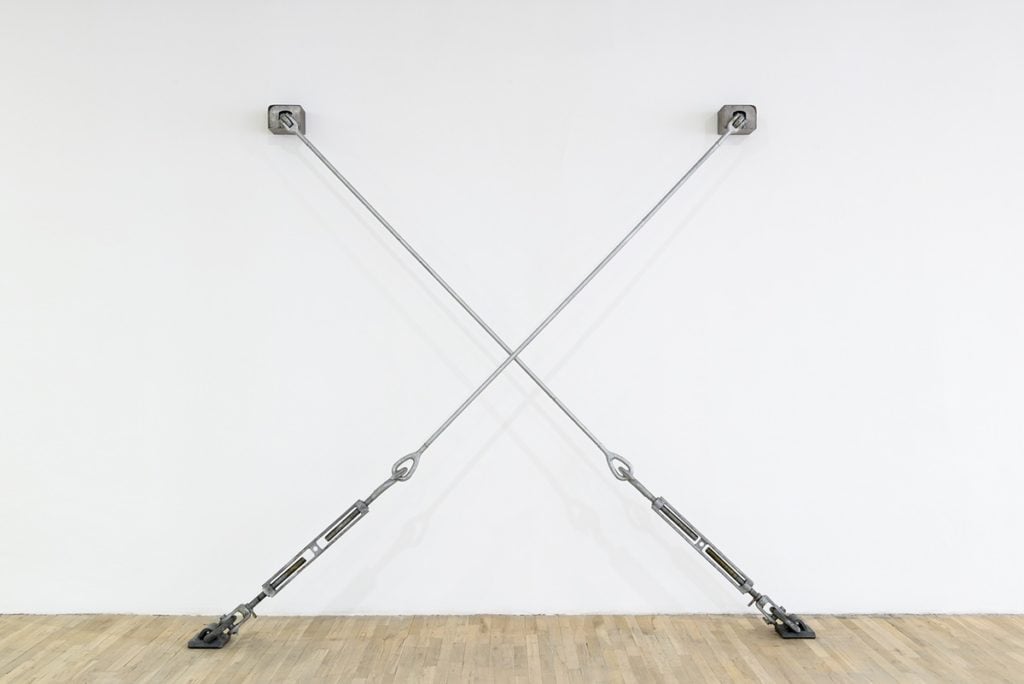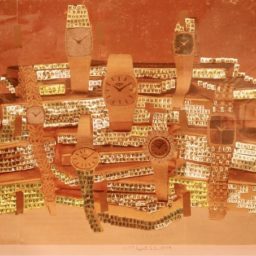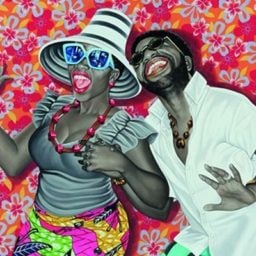Back in 1970, when soda bottles in Brazil were still being returned, refilled and resold, a friend bet the artist Cildo Meireles that if he put foreign objects inside a Coca-Cola bottle few people living under the era’s oppressive military dictatorship would notice. That same afternoon, Meireles went home and wrote up a set of instructions for turning Coke bottles into consciousness-raising Molotov cocktails.
Meireles’s instructions read: “1) In society there are certain mechanisms for circulation (circuits); 2) These circuits clearly embody the idea of the producer, but at the same time they are passive when they receive insertions into their circuits; 3) This occurs whenever people initiate the circuits.” Soon after, the artist stamped banknotes with the declaration “Direct Elections” and Coke bottles with the command “Yankees Go Home!” Then he sent them out into the world.
Titled “Insertions into Ideological Circuits,” Meireles’s use of First World conceptualism for Third World activist political ends has made a notable comeback recently in the work of American artists. It’s become especially prominent in the efforts of non-New Yorkers, like Rick Lowe, Mel Chin, and Theaster Gates, and took center stage in “Transmissions,” a flawed but necessary show at the Museum of Modern Art in New York which surveyed 1970s-era conceptualism from Latin America and Eastern Europe.
This month, Meireles’s pioneering interventionism has resurfaced in a much-discussed solo show at Artists Space by the Philadelphia-born artist Cameron Rowland. Rowland owes a heavy debt to the Brazilian artist and others like him, but the young conceptualist has also branched out in a uniquely American direction—chiefly by introducing a prosecutorial principle into the profit-centered heart of the US correctional system. At Artists Space, his object-aided polemics channels both Spike Lee and Loretta Lynch.
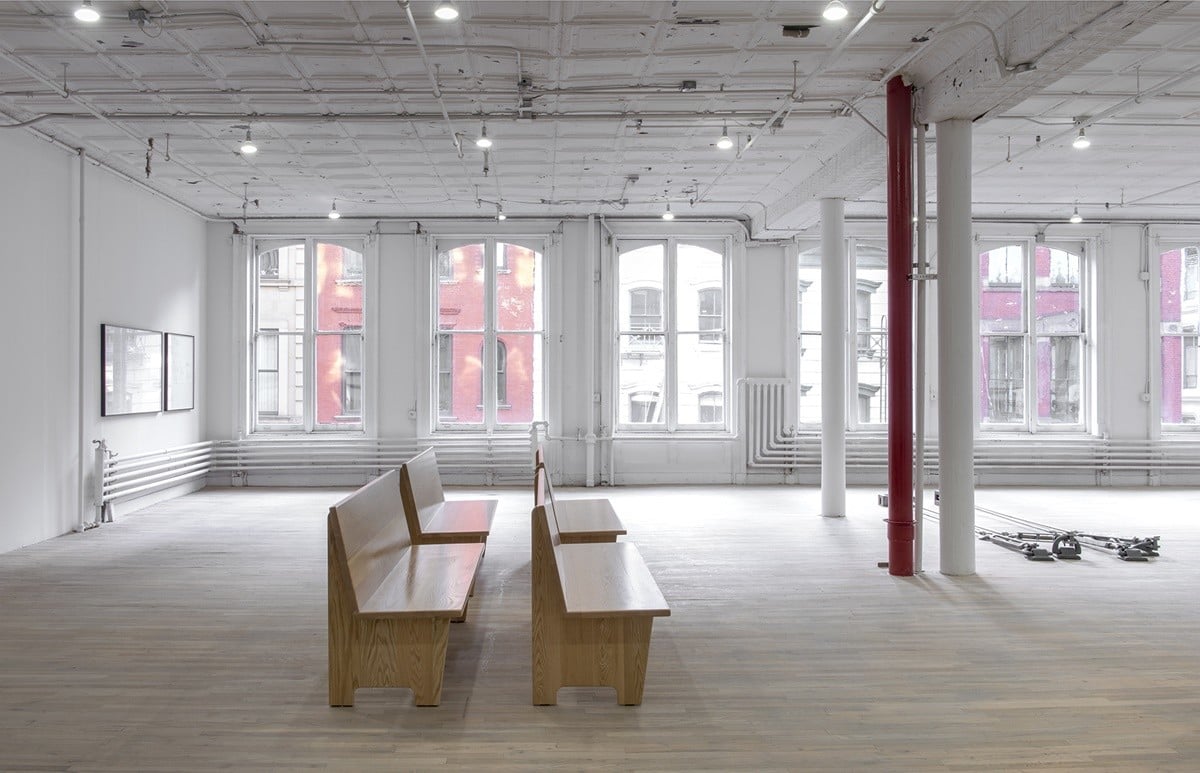
Installation view from Cameron Rowland, 91020000, Artists Space, New York, 2016.
Photo: Adam Reich.
Like Meireles, Rowland does not deploy metaphorical representations. Instead, his art marshals objects that embody real situations in themselves. The artist arrays a dozen different objects around Artists Space’s open-plan gallery to manifest the invisible economy that has exploited prison labor since the 1865 passage of 13th Amendment, which outlawed slavery but legalized involuntary servitude as criminal punishment. With that constitutional cover the US government has built crucial infrastructure at little or no cost, from interstate highways to courtroom benches.
Expanded captions about the exhibition’s objects and the history of convict leasing appears in a twelve-page brochure Cameron provides for viewers. Also included in those pages are a précis of the pro-reparations argument made by Douglas A. Blackmon in his 2009 book Slavery By Another Name, as well as the exhibition’s title, “91020000.” This last is the “customer number” assigned to Artists Space for registering with the innocuous-sounding Corcraft, the commercial designation for the New York State Department of Corrections and Community Supervision. This use of bland government officialese masks a long and terrible history—Alabama once suffered a 45 percent mortality rate among leased prisoners—and recalls Nazi Germany’s dishonest use of an otherwise perfectly good motto: Arbeit Macht Frei (Work will make you free).
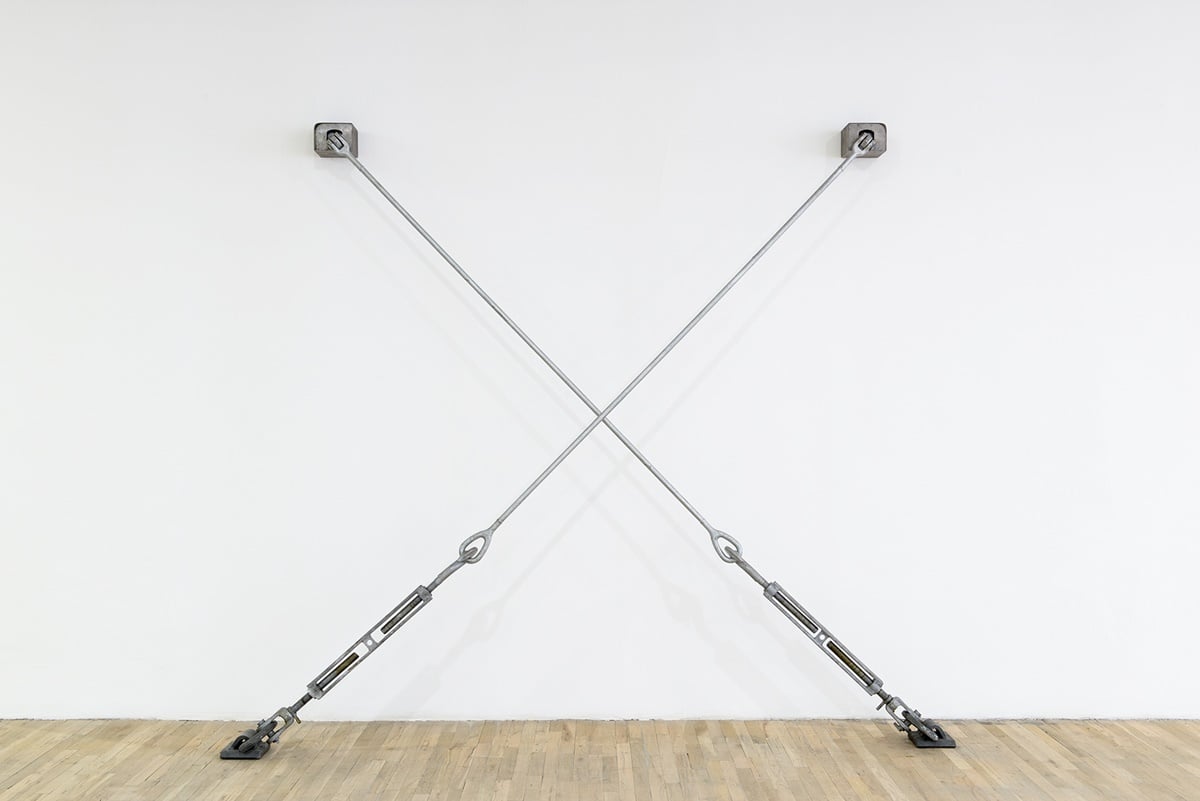
Insurance, 2016
Container lashing bars, Lloyd’s Register certificates
102 × 96 × 11.5 or 149 × 18 × 4.5 inches.
Lloyd’s of London monopolized the marine insurance of the slave trade by the early 18th Century. Lloyd’s Register was established in 1760 as the first classification society in order to provide insurance underwriters information on the quality of vessels. The classification of the ship allows for a more accurate assessment of its risk. Lloyd’s Register and other classification societies continue to survey and certify shipping vessels and their equipment. Lashing equipment physically secures goods to the deck of the ship, while its certification is established to insure the value of the goods regardless of their potential loss.
Courtesy of the artist and ESSEX STREET, New York
Photo: Adam Reich.
Among the objects Rowland deploys are an institutional metal and wood desk, seven large cast aluminum rings used to modify the height of manholes, four oak benches of the sort favored by the judicial system, two firefighting suits and a pair of lashing bars that form a large X on one of the gallery walls. All but the lashing bars—which are used to tie down containers on cargo ships—were made in prisons. Though the installation’s objects mostly reject symbolism, these shipping restraints invoke the anonymity of the Middle Passage, the no-name kidnapping masterfully abbreviated by Malcolm Little, the African American activist who later rechristened himself Malcolm X.
But these are not the only objects Rowland uses to remove scales from viewers’ eyes. A pair of tiny medals at the entrance of the gallery documents a century-old association that advocated for ex-slave compensation—ironically Rowland purchased these pot metal badges from Civil War buffs—while the Nomex Fire suits the artist hangs between two windows present gear manufactured for two separate populations of California emergency workers. Orange is for the state’s 4,300 inmate wildland firefighters, while yellow denotes non-inmate firefighters.
This information throws up enough red flags to fill an ACLU brief. Who knew there were inmate firefighters? And, just as pressing, what do these convict rescue workers get paid?

1st Defense NFPA 1977, 2011, 2016
Nomex fire suit, distributed by CALPIA
50 × 13 × 8 inches, Rental at cost.
“The Department of Corrections shall require of every able-bodied prisoner imprisoned in any state prison as many hours of faithful labor in each day and every day during his or her term of imprisonment as shall be prescribed by the rules and regulations of the Director of Corrections.” – California Penal Code § 2700. CC35933 is the customer number assigned to the nonprofit organization California College of the Arts upon registering with the CALPIA, the market name for the California Department of Corrections and Rehabilitation, Prison Industry Authority. Inmates working for CALPIA produce orange Nomex fire suits for the state’s 4300 inmate wildland firefighters.
Courtesy of the artist and ESSEX STREET, New York
Photo: Adam Reich.
Among the things we learn from “91020000” (if we didn’t know them already) is that black people are incarcerated at nearly six times the rate of white people, and that convict labor regularly earns a fraction of the $7.25 federal minimum wage. In fact, pay dips as low as 10 cents an hour and climbs as high as $1.14 an hour for inmate labor. But besides raw data on the prison industrial complex, Rowland’s exhibition also proposes a structural innovation to adjust the imbalances of another exploitative economy: namely, art.
Rather than sell his work outright, the artist has come up with a system in which he leases it to collectors, after which the lease is either renewed or ownership reverts to the artist.
This marketing method, besides doing away with investing and speculation, also proves it’s possible to conceive of a less toxic way of engaging with a real economy. Which, in turn, points up the genuinely radical nature of this young artist’s exhibition. Rowland does more than merely provide evidence of historical injustice at Artists Space. He harnesses a system of circulation á la Meireles, reconsiders its basic currency—be it money, data, real estate, goods and services or art—and turns its values on its head.
